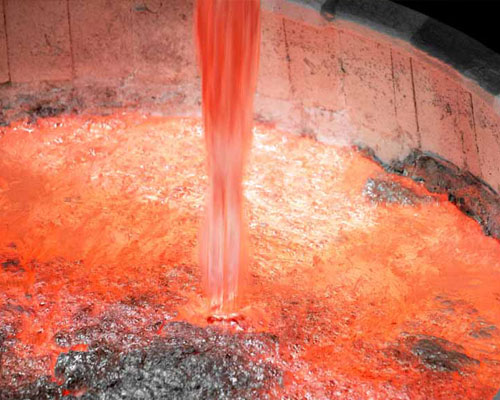In the case of refining in the melting furnace or not, the refining of the aluminum flux can be performed on the holding surface or launder after the melting furnace. However, in many cases, the holding furnace and launder did not initially have equipment for refining or removing slag. Since there is no need to newly install such equipment or directly use existing equipment, it is advantageous to perform the refining in a melting furnace.
When the refined molten aluminum is transferred from the melting furnace to the launder, and then an inert gas is injected into the molten aluminum flowing through the launder to remove the gas from the molten aluminum, the efficiency of the refining droplet of the gas is removed by the rotating degassing method Quantity, the flow rate of the melt decreases.
When the molten aluminum refined with the molten aluminum flux is transferred from the melting furnace to the launder, and then the molten aluminum is supplied to the mold through the launder, an inert gas is injected into the flow path. The molten aluminum flows down from the launder to remove the gas in the molten aluminum.
The molten aluminum refined by the aluminum casting flux, regardless of whether it passes through the holding furnace, is transferred from the melting furnace to the launder, and an inert gas (no flux) is injected into the melt stream. Flow down through the water tank for degassing and refining the melt. When aluminum flux refining the melt in the launder, it is important to inject the inert gas into the melt flowing through the launder by injecting the inert gas into the spray gun or stirring fan just above the melt, especially into the bottom of the launder.
When the inert gas is injected into the bottom of the melt flow, the injected inert gas will rapidly diffuse in multiple directions inside the melt flow through the kinetic energy of the melt, for example, along the upper, lateral and oblique directions inside the melt flow. The melt flows. Therefore, the foaming effect and degassing effect on the melt are enhanced.

